
views
Harvesting Dandelion Roots
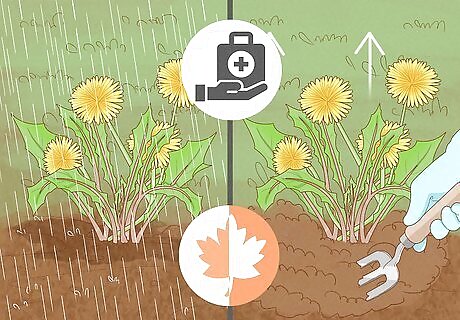
Harvest in the fall to use for medicinal purposes. The roots extend deeper than you might expect - up to a foot below the surface - and they can be hard to get out of the ground. Once fall arrives, wait for a heavy rain to loosen the soil, and they’ll be easier to harvest. A fall harvest is ideal for medicinal content contained in the roots. At this time of year, insoluble fiber content will be higher, and sugar content will be lower.
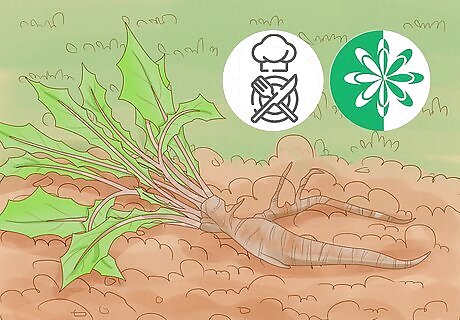
Harvest during the spring for culinary purposes. If you want the roots to be sweeter (for use in some food recipes, for instance) you may want to harvest in the spring, before the dandelions blossom. They’ll be less bitter and chewy this time of year, and generally more palatable. Note that taraxacin in particular - which stimulates bile production and contributes to healthy liver function - will also be more plentiful in the spring.
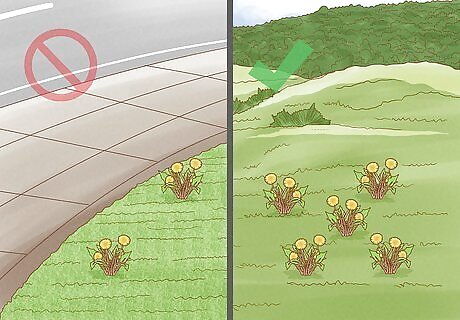
Look in unpolluted areas. In terms of locations, try to gather dandelions in relatively unpolluted areas. In particular, don’t harvest dandelions from the roadside, or from an area where pesticides are used. Since many people use fertilizer or other chemicals on their lawn, the dandelions that may sprout up in your yard are not necessarily the best. Go to a natural grass meadow for the largest and liveliest dandelions.
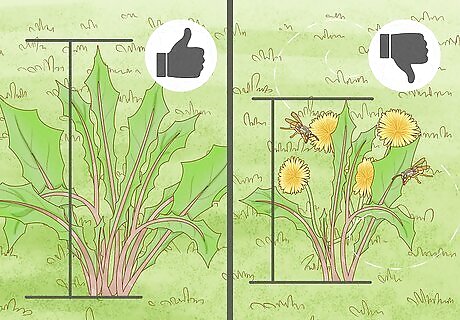
Gather plants that are large and healthy. Select only the largest and most lively-looking dandelions to harvest. Smaller plants won’t have much root, and are better left to keep bees and other insects happy. Consider allowing dandelions to grow naturally in your garden. They will be especially healthy in rich garden soil, and are unlikely to hurt your other plants.
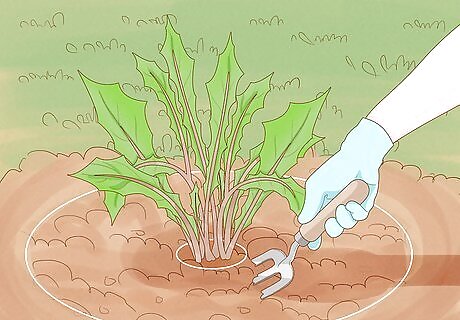
Use a garden fork to loosen the soil around the root. Take care not to damage the root, which is shaped like a long thin carrot. Move the tool through the soil around the plant, but not beneath it. If you don't have a garden fork, a small shovel or another garden tool can work just as well.
Drying and Tincturing your Dandelion Roots
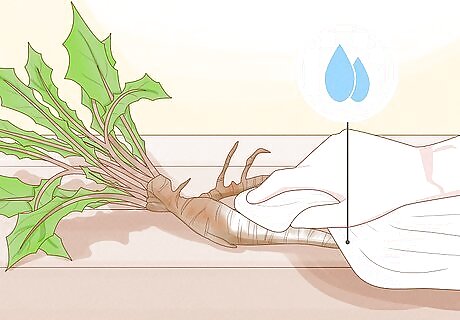
Clean the dandelion roots. Shake off the dandelion roots to remove soil and rub them with a wet, clean cloth to clean them. Once cleaned, they are ready for immediate use, or to be dried and otherwise preserved.

Dry out the roots. If you’re using a dehydrator, slice cleaned roots into thin strips of comparable lengths and dehydrate them at 95 degrees F (35 degrees C) until each piece is brittle to the touch. Alternatively, tie individual roots with a piece of string and hang them somewhere cool, dry, and with active airflow. You can also lay them on a screen in such an area. If air-drying, allow them to air dry for several days, until brittle, and cut them into smaller pieces. This may occur in anywhere from three to fourteen days, depending on air conditions. Store dried root pieces in a glass jar, where they will keep for up to a year. The outer layer of the root will darken over time, while the inner portions of the root should remain a creamy white.

Make a root tincture. Tinctures are a common way to preserve and deliver the medicinal properties of dandelion roots and other herbs. Since the tincture will be alcohol based, it will last much longer than dried roots, and will have fast-acting effects when administered in this form. To make a tincture, simply submerge root pieces in a jar with a high proof liquor. Use a 1:1 weight ratio of liquor to root. A 100 proof liquor (which will be 50% alcohol) is important, as this will keep the solution’s overall alcohol concentration high enough to prevent fermentation. Whiskey or vodka are recommended. Exact amounts aren't too important. Ensure that the roots are fully submerged, and that there is about and inch of liquor above the root pieces. Allow the tincture to steep for six weeks, gently shaking the jar every day. Strain the tincture through muslin cloth and bottle it in a sterilized dark glass bottle.
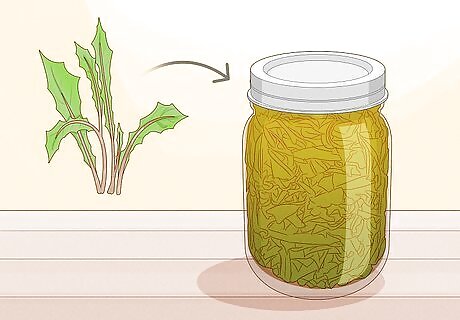
Include dandelion leaves in your tincture for medicinal properties. Complete the same process to create another tincture using dandelions instead of root pieces. Once both tinctures are finished, you can blend the two and have a dandelion tincture with more encompassing medical properties. It’s worth tincturing leaves and roots separately, as the leaf tincture will be finished in a matter of weeks, while the roots take longer. Alternatively, dry extra leaf at the time of harvest, and make an additional tincture later on to blend into older batches to give them a boost.

Take dandelion root tincture as an anti-inflammatory and detoxifier. Dandelion is best known as an effective diuretic, meaning it kicks the liver into higher gear. This helps clean your blood, and can help keep you liver, spleen, and gallbladder in good shape. Further, some herbalists recommend dandelion root tincture for daily use for other reasons as well. Claims related to overall health including dandelion root’s ability to help regulate blood sugar, reduce stress, and improve skin health. A few drops of tincture in juice or water can be taken daily for these benefits. Some also use and recommend the tincture to treat arthritis symptoms, as well as hangovers.
Using Dandelion Roots for Specific Purposes
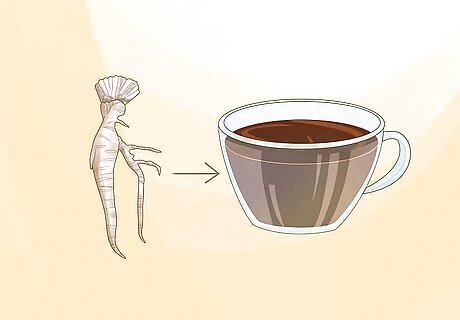
Infuse dandelion roots into a tea. One of the easiest ways to use dandelion roots is in tea. Tea made with these roots will be high in antioxidants. Drinking it is said to help balance your blood sugar, aid digestion, have diuretic and laxative effects, cleanse the liver, and help prevent urinary tract infections. Most dandelion tea is made with the leaves of the plant. However, you can make dandelion tea with the roots by making a decoction and adding more water until you have the desired flavor potency. Dandelion root tea will likely be quite bitter. Consider sweetening with whatever you prefer in your tea, such as honey.

Make a dandelion root decoction. Somewhere between a tincture and a tea, a decoction is essentially a reduced tea. The target is about a quarter of the liquid that would be present in tea, for instance. This provides a more potent liquid that can keep for a longer period of time when refrigerated, and can be even added to hot water to make a cup of tea. To begin Decorating, heat your dandelion tea in a pot until it begins to steam. Maintain constant steam without allowing the liquid to simmer. This can usually be accomplished with a burner set to low. Once the liquid is reduced to a quarter of the original liquid content, allow it to cool and pour the decoction in a sterilized dark glass bottle. You can also make a decoction by simmering an ounce of dried roots (or two ounces of fresh roots) in a pint of water. Keep the solution covered as it simmers for 20 minutes.
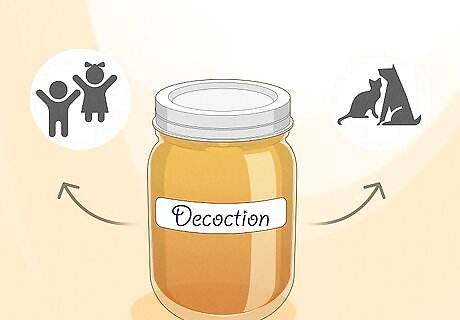
Use a root decoction to treat animals or children. Decoctions can be used in the same manner as you would teas or other infusions. The main difference is that a smaller dose can have similar effects. In particular, animals or kids may be more willing to take a smaller portion of a decoction than a full glass of tea. A quarter cup of decoction is considered one dose, whether for a daily health boost or to help treat a particular symptom.
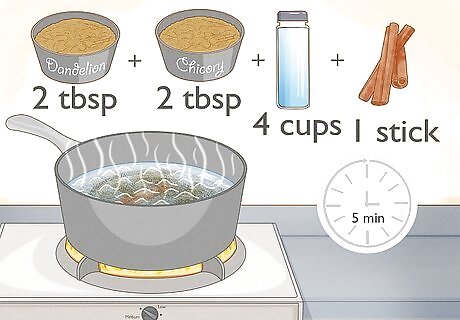
Wake up with dandelion root coffee. Though caffeine-free, dandelion and chicory tea offers a sweet, spicy, and surprisingly satisfying early-morning alternative. You’ll need to grind and roast both dandelion and chicory root to get started. Use two tablespoons of each, along with four cups of water and a cinnamon stick. Bring all of the ingredients to a boil in a pot. Turn down the burner to simmer the liquid for five minutes. Strain the beverage and add milk or a milk alternative to taste.
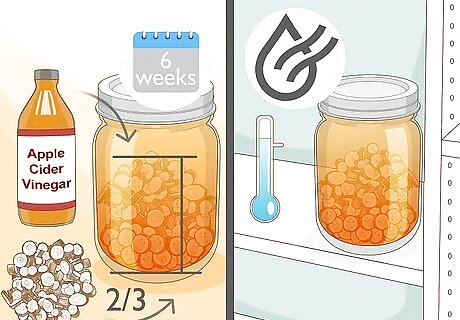
Infuse dandelion root into apple cider vinegar. Apple cider vinegar is remarkably healthy on its own, and all the more so when infused with dandelion root. You can then add the vinegar to soups and salads, or drink it on it’s own. Chop enough fresh or dried dandelion root to fill a mason jar two-thirds of the way. Then fill the jar with raw apple cider vinegar, making sure to include the bacteria that collects at the bottom of the cider jar. Allow the roots to infuse into the vinegar for six weeks. Store the jar in a cool, dry place out of first sunlight. Strain with a muslin cloth and store your vinegar in a sealed glass jar.
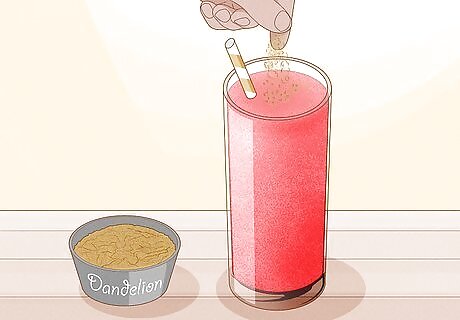
Add fresh or dried dandelion root to you daily smoothie. You can add fresh or dried dandelion root to things you regularly eat, such as smoothies, for a nutritional boost. This will also offer extra support for your liver. Blend dried root into a powder on its own before adding it to other ingredients. Fresh dandelion root, meanwhile, will blend into other ingredients like other fruits or veggies.
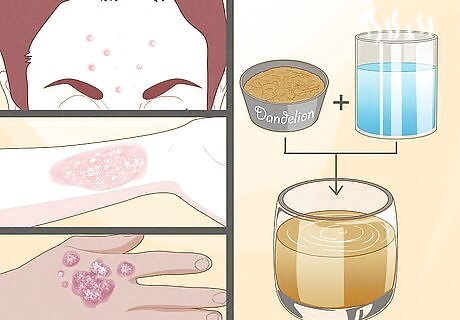
Treat some skin disorders with a dandelion root poultice. Conditions such as acne, eczema, and psoriasis, as well as some unidentified skin irregularities can be treated with a simple dandelion root paste. Use a food processor or coffee grinder to grind dried dandelion root into a cup’s worth of powder. Add a bit of warm water and mix until you have a thick paste. Clean and dry the affected area of your skin. Spread the poultice onto a piece of gauze or clean cloth and use it to cover the area. Wrap the area with plastic wrap. If necessary, wrap the area again with a clean material that can be pinned in place. Leave the poultice in place for anywhere from twenty minutes to three hours. Repeat as necessary, cleaning and drying the area in between applications.

Talk to a healthcare provider about any uncertainties. In general, dandelion root is considered safe to use in herbal remedies. However, speak with your doctor before using any herbs to treat a medical condition. Furthermore, dandelion should not be used if any of the following apply: You’re allergic to similar plants, including ragweed, chrysanthemums, marigold, chamomile, yarrow, daisies, or asters. You’re allergic to iodine. You experience heartburn symptoms or skin irritation when using dandelion. You are pregnant or nursing. You have gallstones, stomach issues, or other digestive issues. You’re taking potassium supplements or blood thinners. You’re taking medication to treat an infection.



















Comments
0 comment